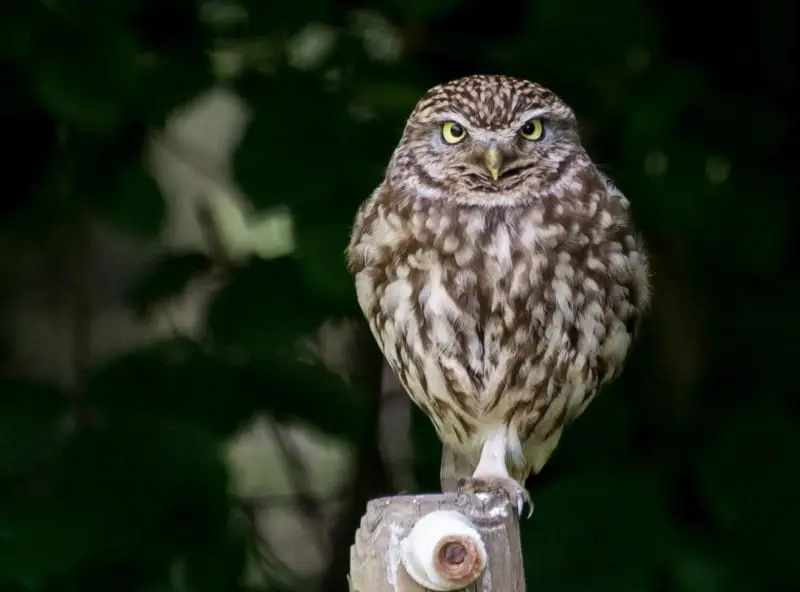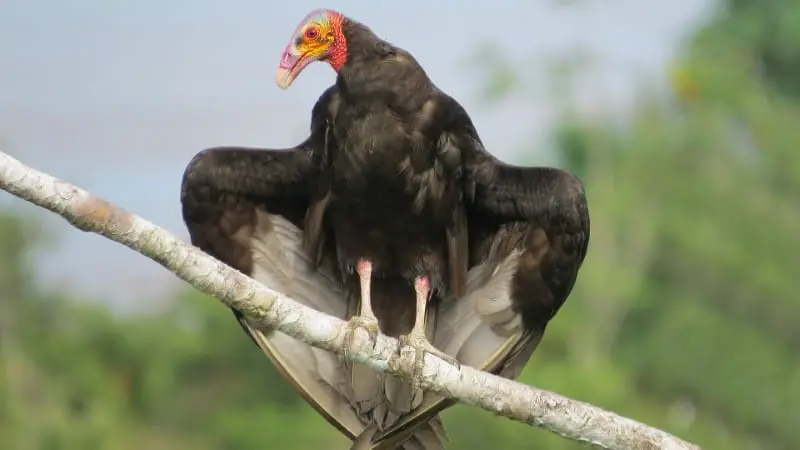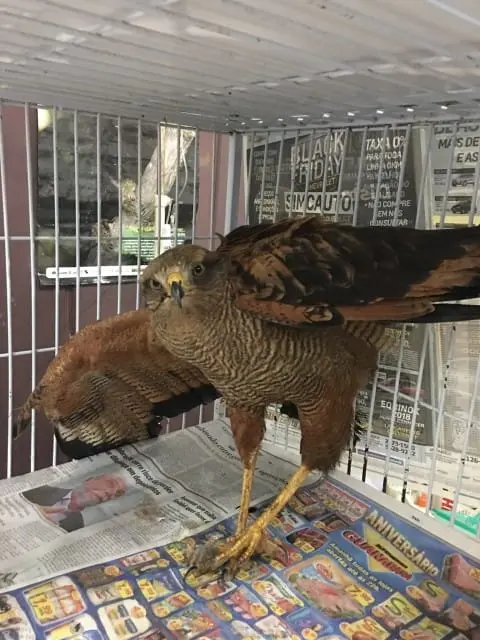Birds of prey in Brazil
Raptors have fascinated people throughout history, perhaps more than any other group of birds. Proof of the respect, admiration and veneration they have earned lies in the diversity of their symbolism, from hieroglyphics to flags and national emblems, which condense the ideals they have transmitted to these cultures, such as power, vitality, wisdom and nobility.
Birds of prey are also surrounded by myth, mysticism and fear, especially when it comes to owls and vultures. As a result, many are persecuted and killed for unjust reasons. Understanding these animals, their way of life, and their importance to the environment is a big step towards helping to conserve them.
General characteristics
Birds of prey or raptors are all eagles, hawks and vultures (Acipitidae), falcons and caracaras (Falconids), owls (Strigids), condors and vultures (Catartids). They are found on all continents except Antarctica and inhabit a wide variety of habitats, from coastlines to mountains and from grasslands to forests.
There is no exact number of species, as some are considered species by some researchers, while others classify them as subspecies. However, based on available data, there are about 550 species of raptors in the world, of which 212 are owls.
Central and South America concentrate the largest number of raptors in the world. In Brazil, there are 100 species, of which 50 are eagles and hawks or harriers, 21 are falcons, 23 are owls and 6 are vultures. 1

Birds of prey possess several defining characteristics. Prominent among them is their keen eyesight. These birds can see 2 to 8 times more than humans, — the golden eagle (A. chrysaetos), for example, can find a rabbit in the middle of the woods more than 3 km away.
Unlike all other birds, raptors have eyes on the front of their heads, which allows them to see depth and distance better, which helps them hunt. Daytime raptors see color, but owls, being mostly nocturnal, see few colors or only shades of gray.
Owls' eyes have more light-sensitive cells than color-sensitive eyes; most have eyes that are 10 to 100 times more sensitive to light than humans, which means they have great night vision. The strong, curved, sharp beak is another notable feature of raptors - adapted for tearing the tissues of prey or even shooting them down (in the case of hawks).
Some small species like the chili pepper (F. sparverius) have a short bill, suitable for eating rodents and insects. The harpy eagle (H. harpyja) has a large, strong beak for removing large pieces of meat from sloths and monkeys. The snail kite (R. sociabilis), on the other hand, has a long and more curved bill than any other raptor — a necessary adaptation for getting the snails out of their shells.
Raptors also have strong and sharp claws, perfect for catching and killing their prey. They also have great hearing - especially owls. Although most raptors have a limited sense of smell, vultures have a very keen sense of smell, allowing them to find food from miles away.2 3
Are vultures birds of prey?

The fact that vultures are part of the raptor group has always been a matter of debate among birdwatchers and researchers.
First of all, the term “raptor” refers to the act of capturing prey, a characteristic that vultures do not have. Vultures don’t have strong legs and claws like other birds of prey, so they can’t kill or carry prey over long distances. Their beaks are also not as strong, and without the help of other scavenging raptors such as caracara, most vultures would barely be able to rip the skin off their prey.
However, just like other raptors, vultures have great eyesight, smell, hearing, and a great ability to fly. In addition, recent genetic evidence shows that vultures are closely related to hawks and eagles — thus, they are part of the raptor group. 4
Threats and Conservation
Birds of prey play a key role in regulating prey populations, yet they are very susceptible to environmental change, and are the species that suffer the most from the impacts of human modifications. 5
Of the approximately 100 raptor species in Brazil, 35 are regionally threatened, and 15 are threatened nationwide by human activities. Habitat loss is arguably the biggest threat to birds of prey. The Atlantic Forest is home to about 72% of the species that occur in the country, but the biome is one of the most fragmented and threatened forest systems in the world, reduced to about 11% of its original area.
The lack of planning in the agricultural and real estate sectors is one of the major causes of destruction of forests, grasslands and cerrados.3 Such devastation has conditioned the current state of conservation of avifauna in some states as the most threatened in Brazil and in the whole Neotropical region.
While generalist or grassland species such as the crested caracara and yellow-headed caracara have expanded their distribution in the face of the replacement of forest environments by pastures and cultivated areas, forest species such as the white-necked hawk cannot withstand changes in their habitat, worsening their conservation status.6

Hunting and persecution
Although illegal, many birds of prey are still hunted in Brazil. In many regions, they are shot by farmers to prevent attacks on their livestock or even their children, which is completely unfounded.
Birds of prey, especially large birds, are also often killed out of curiosity or because they are considered “trophies”. On the other hand, many people still kill owls, hawks, and vultures because they associate them with death, bad omens, or bad luck.
Other threats to raptors are Indirect poisoning by ingesting animals poisoned by pesticides, heavy metals, and other harmful chemical elements; illegal capture and trade; collisions with glass, aircraft, and kite lines; and trampling and electrocution by electric fences.7
Conservation measures
The conservation and protection of birds of prey requires a joint commitment of the community, because several threats influence the reduction of the species. The most important and immediate actions are the protection and conservation of their habitat, through the connection between protected regions, allowing the genetic exchange between previously separated populations, as well as the reoccupation of places where they became extinct; and the increased surveillance of protected regions.
Likewise, the development of scientific studies, biological and ecological research of each species, and the search for unknown populations, would allow for understanding about the conservation and distribution of many birds of prey.
Management and reintroduction programs are equally important to rescue populations that are close to extinction, as is the case of the harpy eagle (H. harpyja) of the Atlantic Forest. Environmental education is one of the most important and effective means to boost the conservation of birds of prey and nature.3
Read more at:
-
Aves de Rapina Brasil. Acesso em: 8 de Novembro de 2022. ↩︎
-
Características gerais das aves de rapina — Aves de Rapina Brasil. Acesso em: 10 de Novembro de 2022. ↩︎
-
Icmbio — Plano de Ação Nacional para a Conservação de Aves de Rapina — 2007 ↩︎
-
Urubus são aves de rapina? — Aves de Rapina Brasil. Acesso em: 8 de Novembro de 2022. ↩︎
-
Mindell, DP, Fuchs, J., Johnson, JA (2018). Filogenia, taxonomia e diversidade geográfica de aves de rapina diurnas: Falconiformes, Accipitriformes e Cathartiformes. In: Sarasola, J., Grande, J., Negro, J. (eds) Aves de Rapina. Springer, Cham. https://doi.org/10.1007/978-3-319-73745-4_1 ↩︎
-
ZORZIN, Giancarlo. Effects of the Atlantic Forest fragmentation on the species richness and abundance of Accipitriformes and Falconiformes in the Zona da Mata region, Minas Gerais. 2011. 116 f. Dissertação (Mestrado em Biologia e Manejo animal) — Universidade Federal de Viçosa, Viçosa, 2011. ↩︎
-
Ameaças e conservação das aves de rapina — Aves de Rapina Brasil. Acesso em: 11 de Novembro de 2022. ↩︎
